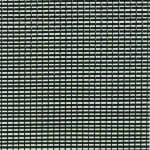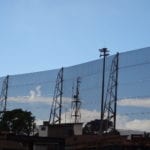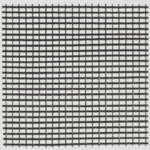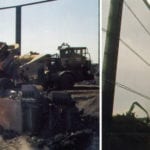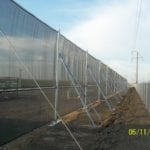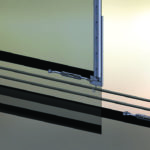First let us make some basic fabric assumptions.
- It needs to be effective.
- It needs to be economical.
- It needs to be durable in your environment
These assumptions seem basic, but actually there are some subtleties which should be addressed first.
- Effectiveness. Wind fences slow the wind and control dust. These are not absolutes. Even in outer space there is a solar wind and there is dust. Clearly “effective” really means a level of control that meets some pre-set standards. These in turn are linked to environmental conditions such as base levels of dust or reference wind speeds.
- Effectiveness may also be linked to cost as in “I want the most control I can get for $X”. The reverse is “I want the least expensive option that will be Y% effective in these situations.”
Note that cost may not just be capital cost. It should include maintenance costs and it should also include the monetary value of the various benefits. The benefits might include the value of the fugitive dust, the reduced maintenance costs on plant and equipment, increased operating time and so on. To evaluate if a solution is economical one should consider all these permutations. - For fabrics, how long does a fabric need to last to be considered durable? If the fence is a temporary fence erected for the control of construction dust, perhaps not long at all. On the other hand if it should get hit by a storm and fail, then construction could be held up until it was replaced, so durability is also a function of appropriate strength.
With these basic assumptions in place, we can address the original question with a step-wise series of questions.
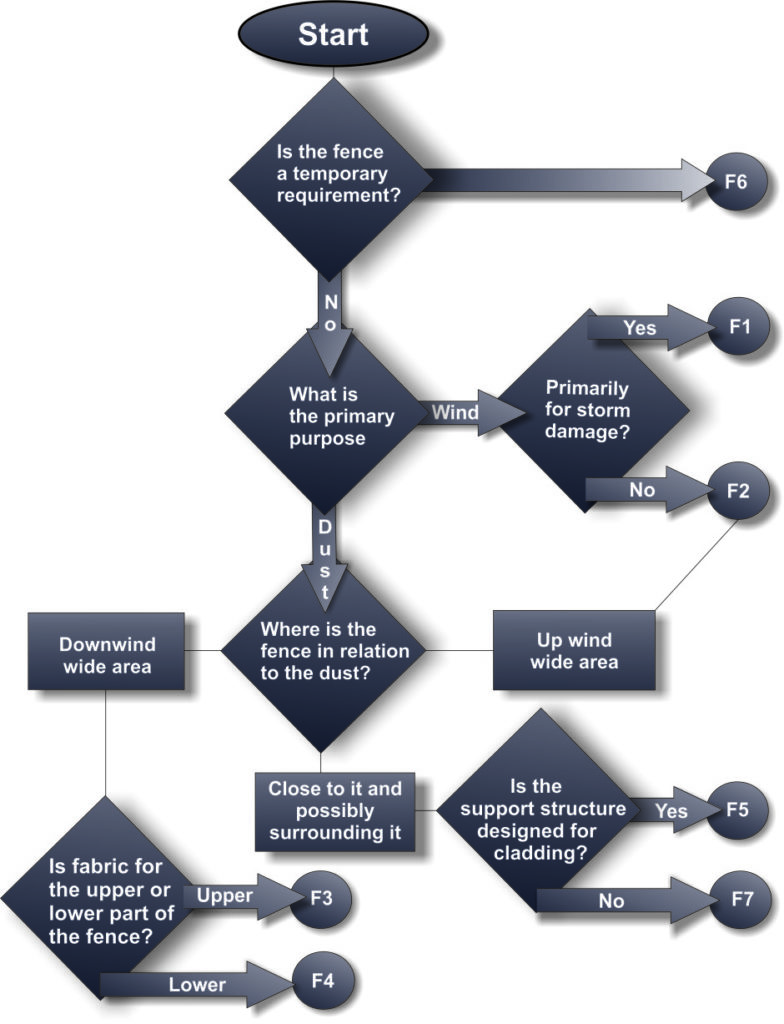
F1 – 24% Aerodynamic Porosity Fabric Information
Choose the more porous fabrics such as 20% and 30% aerodynamic porosity. This gives a modest reduction in wind speed over a greater distance. The loads on the structure are also minimized which reduces the cost. This effect is quite pronounced as typically 70% of the total cost are the poles, and the cost of the poles is tied to how strong they need to be.
The 30% aerodynamic porosity fabric is also useful in internal situations where there are several lines of shelter as the shelter effect and the turbulence is aggregated.
- Building cladding 24% porosity for a bag house
F2 – Fabric Aerodynamic Porosity mid – Range
Choose mid-range porosity fabric such as 47%, 40%, and 34% aerodynamic porosity. These fabrics are in the sweet spot for effectiveness for industrial dust control as they allow enough air to pass to minimize downwind turbulence, but still give excellent shelter. Moving from 47% aerodynamic porosity fabric towards 34% aerodynamic porosity gives better close in shelter but increases the load on the structure. For very turbulent incoming winds, 47% aerodynamic porosity fabric will usually be better as it is more of a filter.
- Optimal wind sheltering – wind fencing
- Solar fencing
- 47% aerodynamic porosity grass green and black
- 34% aerodynamic porosity fabric
F3 – Fabric 40 % Aerodynamic Porosity
A downwind fence is being used to simply block the dust particles. One might expect a solid fence to be best in this regard, but what happens is that the wind helps the particles “climb” the fence. When the fence has some porosity the particles get blown against and through the fence. Of the particles that get blown through, most settle out in the zone just past the fence.The best compromise between all these effects for upper fabrics are those from 40% to 34% porosity. More porous means letting more dust through, more solid means the fence becomes more expensive because of the load.
- Universal
- Solar fencing
- 40% aerodynamic porosity fabric being used for a barge un-loader
- A close up of the cladding on the barge un-loader. A mid range fabric is a good fit for this
- Slag dump fabric is 40% aerodynamic porosity fabric
F4 – 24% Aerodynamic Porosity Fabric Information
The bottom part of a downwind wind fence can be more solid. This makes sense as 90% of eroded dust never gets far above the ground apart from when it is being blown up the face of a solid obstruction. A low block wall is often used at the very bottom as it gives loaders something to run their blades against.
Above that fabric of 24% aerodynamic porosity is usually recommended. It gives excellent dust control without flapping and banging too much. More solid fabrics are available but they can have durability issues unless they are very narrow (1.2 m wide or less).
F5 – 24% Aerodynamic Porosity Fabric Information
The ideal cladding fabric for most situations is the 24% porosity. It is porous enough to allow the enclosure to breathe, but still trap nearly all dust inside it.
- Used down low on fences
- Good for close to stock pile
- Wind fencing for dust control. Lower panels on this structure are 24% aerodynamic porosity
- Building cladding 24% porosity for a bag house
- nd fencing for dust control
F6 – Temporary Fences Fabric Information
A temporary fence is for situations where the reason for the fence will be short lived. A typical example of a temporary fences is a fence around a construction site. Another style of temporary fences is what we call a portable fence. Here the fence is needed in one general area, but the specific location may change daily. An example of this situation is a gravel crushing facility with a portable crushing unit or portable conveyor system, then it makes sense to have a portable fences. In both cases the fences still need to be designed to meet agreed wind loads. WeatherSolve does not supply “budget” fabrics as the savings are quickly overtaken by even minor repairs. For short-lived temporary fence requirements, systems are provided that allow the fabric to be removed intact from the structure and stored for potential reuse. Support structures can be treated the same way.
- 5 m (16 ft) temporary fencing for solar field
F7 – Purpose Built Structure
Install a purpose built structure and use fabric discussed in F5 (which is 24%) or consider the most dense fabric the structure can support. Talk to a dust control professional today 1-604-607-7781
- Image showing removable cladding on a purpose built structure

